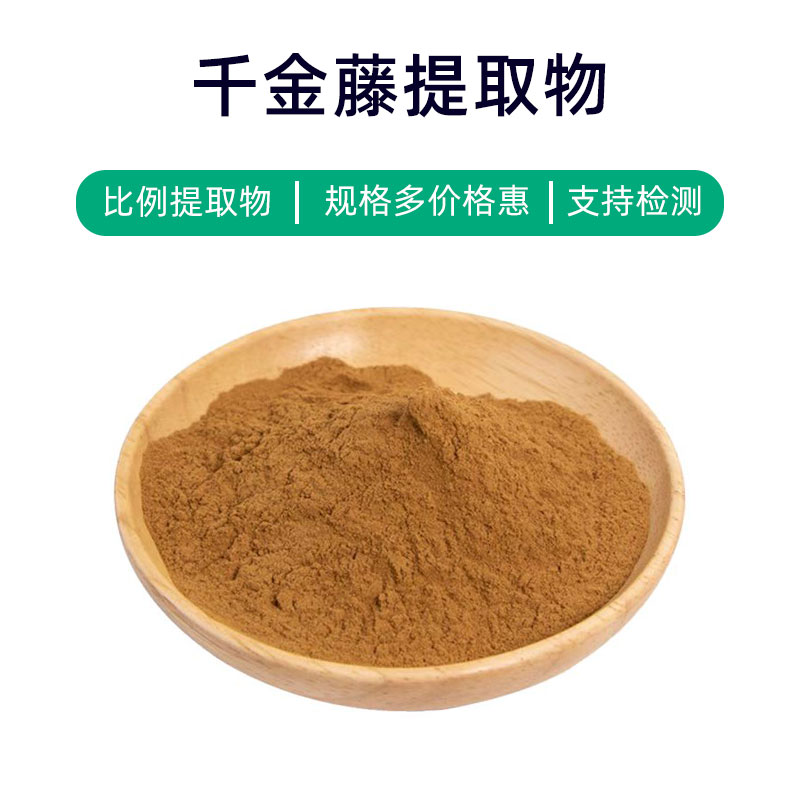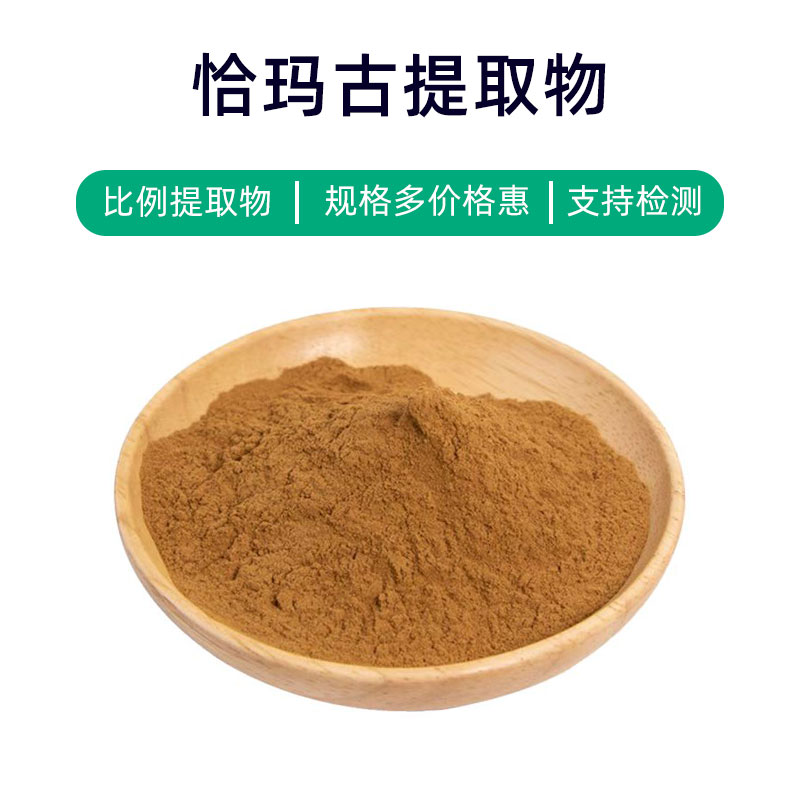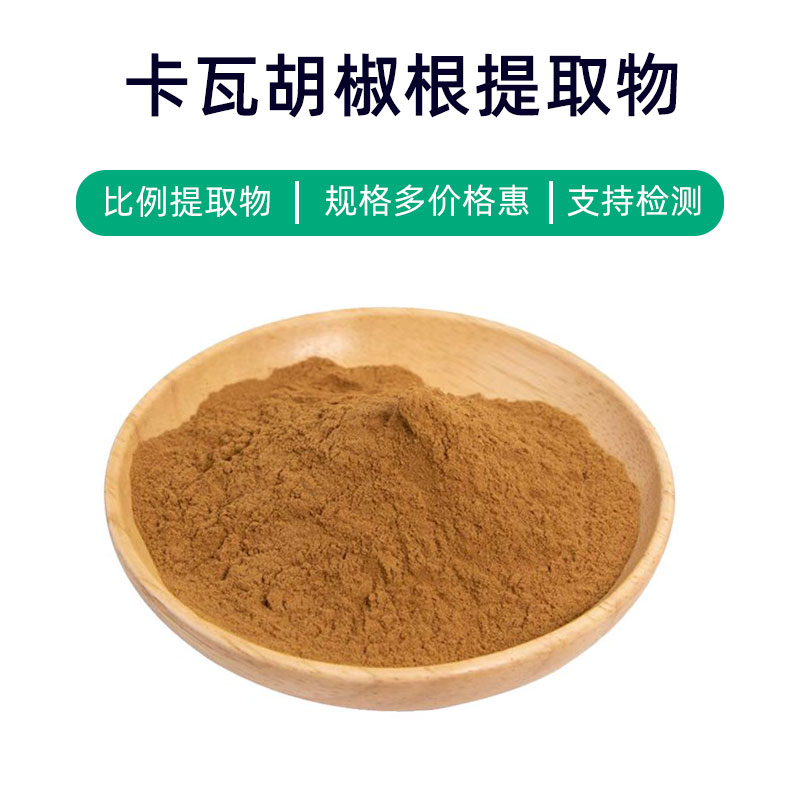Introduction to Ginseng - Red Ginseng Extract Product
Red ginseng extract is a product extracted from the rhizome part of red ginseng (Panax ginseng). Its main components include active ingredients such as ginsenosides, ginseng acids, and ginseng polysaccharides. Red ginseng extract is widely used in fields such as health supplements, medicine, food, and cosmetics. Its effects are mainly manifested in nourishing and health - preserving, enhancing immunity, and improving physical endurance. In health supplements, red ginseng extract is used as a tonic ingredient, which helps to enhance the body's immunity and improve physical constitution. In the medical field, it is often used to treat symptoms such as weakness, fatigue, and lack of vitality, and helps to improve the overall health level of patients. In the food industry, red ginseng extract is often added to various nutritional products and health foods to increase nutritional value and functionality. In cosmetics, red ginseng extract is commonly used in skin - care products and anti - aging products, with effects such as moisturizing the skin, reducing wrinkles, and improving skin tone. Overall, red ginseng extract, as a precious herbal extract, has broad application prospects and shows good market value in various fields.
Production Process of Ginseng - Red Ginseng Extract Product
The production process of red ginseng extract usually includes the following key steps:
- Raw Material Preparation: First, select high - quality red ginseng rhizomes as raw materials. Clean and pre - process them to remove impurities and soil.
- Crushing and Grinding: Crush and grind the cleaned red ginseng rhizomes to increase extraction efficiency. Usually, mechanical grinding or micro - crushing technology is used to crush the red ginseng into appropriate particle sizes.
- Extraction Process: Use appropriate extraction methods, commonly including water extraction, ethanol extraction, or supercritical fluid extraction. Water extraction is one of the most commonly used methods. Through water extraction, the active ingredients in red ginseng can be well retained, and the cost can be reduced.
- Concentration and Refinement: Concentrate the extracted liquid to remove excess solvents and water, and obtain a purified extract. Usually, vacuum concentration or membrane separation technology is used for treatment to ensure the purity and activity of the extract.
- Drying and Crushing: Dry the concentrated extract to remove residual moisture and obtain a dry extract. Then, crush it to obtain a powdery product suitable for packaging and use.
- Packaging and Storage: Finally, package the extract and store it strictly according to standard requirements. Usually, use sealed packaging to avoid direct sunlight and a humid environment to maintain its stability and the effectiveness of its active ingredients.
The entire production process needs to strictly control the parameters of each link to ensure the stable quality of the extract and meet the standard requirements. At the same time, relevant regulations and standards need to be followed to ensure the safety and reliability of the product.
Efficacy, Function, and Side Effects of Ginseng - Red Ginseng Extract
Red ginseng extract is a commonly used Chinese herbal medicine extract, with various effects and functions, mainly including the following aspects:
- Enhancing Immunity: Red ginseng extract is rich in active ingredients such as ginsenosides, which can enhance the body's immunity, improve resistance, and reduce the occurrence of infections and diseases.
- Antioxidant Effect: Compounds such as ginsenosides in red ginseng extract have obvious antioxidant effects, which can scavenge free radicals in the body, delay cell aging, and protect physical health.
- Improving Cardiovascular Health: Ginsenosides in red ginseng extract can regulate blood pressure, lower blood lipids, and improve blood circulation, which helps to prevent the occurrence of cardiovascular diseases.
- Improving Physical Strength and Anti - Fatigue Ability: Red ginseng extract is rich in nutrients, which can increase physical strength, improve the body's endurance and anti - fatigue ability, and have obvious effects on relieving fatigue and enhancing physical strength.
- Promoting Digestion and Absorption: The active ingredients in red ginseng extract can promote gastrointestinal peristalsis and enhance the secretion of digestive juices, which helps to improve the digestion and absorption rate of food and improve problems such as indigestion.
- Regulating Blood Sugar Levels: Ginsenosides in red ginseng extract have the effect of regulating blood sugar, which helps to stabilize blood sugar levels and prevent and improve metabolic diseases such as diabetes.
- Improving Sleep Quality: The active ingredients in red ginseng extract can regulate the nervous system, relieve anxiety and tension, and help improve sleep quality and efficiency.
Potential Side Effects of Red Ginseng Extract
Red ginseng extract is generally considered a dietary supplement, and moderate consumption typically does not cause noticeable side effects. However, excessive intake may lead to discomfort such as headaches, insomnia, and palpitations. Therefore, it is advisable to consult a doctor or pharmacist before use and follow the recommended dosage to avoid adverse reactions.
Application Scenarios and Dosage of Red Ginseng Extract
Red ginseng extract has a wide range of applications in the pharmaceutical, food, and cosmetic fields. The usage and dosage may vary depending on the specific application. Below are detailed introductions to its applications and recommended dosages in different fields:
1. Pharmaceutical Field
- Application:
Red ginseng extract is widely used in the pharmaceutical field for preparing various traditional Chinese medicine formulations and health products. It is used to enhance immunity, regulate blood sugar levels, and improve cardiovascular health. - Dosage:
In general, adults are recommended to take approximately 3–6 grams of red ginseng extract per day, with adjustments based on individual circumstances. It can be taken in forms such as decoctions, capsules, or oral liquids.
2. Food Industry
- Application:
Red ginseng extract is commonly added to health foods, functional drinks, and nutritional products to boost physical strength, combat fatigue, and enhance immunity. - Dosage:
As a functional ingredient in health products, the recommended daily intake is 200–500 mg, with adjustments according to the product specifications.
3. Cosmetic Industry
- Application:
Red ginseng extract is frequently added to skincare products, masks, and serums for its antioxidant, moisturizing, and anti-aging effects. - Dosage:
Use according to product instructions. Generally, apply an appropriate amount to clean skin, and gently massage until absorbed.
Precautions:
- Be aware of individual differences; people allergic to red ginseng extract should avoid using it.
- In pharmaceutical applications, use under medical supervision and be mindful of potential interactions with other medications.
- In food and cosmetic products, choose products from reputable manufacturers and follow the instructions on the product label.
In summary, red ginseng extract is a natural medicinal ingredient with various health benefits and is highly valued in different fields. However, proper usage and dosage are essential to ensure safety and effectiveness.
Plant Source, Distribution, and Growing Environment of Red Ginseng Extract
Red ginseng (Panax ginseng C.A. Meyer) is a perennial herbaceous plant belonging to the Araliaceae family (genus Panax). It is a valuable medicinal plant whose root is widely used in traditional Chinese medicine and health products. Below is a detailed introduction to the plant source, distribution, and growing environment:
1. Plant Source
Red ginseng is an evergreen plant primarily cultivated for its fleshy taproot, which is the medicinal part. Its stem base is reddish, the leaves are palmately compound, and the flowers are small and yellow-green, producing follicular fruit. The root system is well-developed, with a thick primary root and sometimes lateral roots. The root contains various active compounds, including ginsenosides, polysaccharides, and ginseng acids, giving it significant medicinal value.
2. Distribution
- Native Range:
Red ginseng originates from East Asia and is primarily distributed in northeastern China, North Korea, Russia’s Far East, and Japan. - Distribution in China:
In China, red ginseng is mainly found in the mountainous forests, foothill grasslands, and river valleys of Liaoning, Jilin, and Heilongjiang provinces. - Global Cultivation:
Due to its medicinal value, red ginseng has been widely cultivated in other regions and is now grown commercially worldwide.
3. Growing Environment
Red ginseng thrives in warm, humid environments with adequate sunlight. It typically grows at altitudes of 800 to 1,500 meters in mountainous or hilly areas.
- Soil Requirements:
It prefers loose, fertile, well-drained soil and can adapt to various soil pH levels, although slightly acidic soil is ideal. - Growth Cycle:
Red ginseng has a long growth period, requiring sufficient moisture and moderate sunlight. Its most vigorous growth occurs from spring to autumn.
In conclusion, red ginseng is a valuable medicinal plant native to East Asia, requiring specific environmental conditions to thrive. Its roots are rich in active compounds, making it highly sought after in the pharmaceutical and health industries.
Processing and Storage of Red Ginseng Extract
The processing of red ginseng extract generally includes the following steps:
- Cleaning and Slicing: The harvested red ginseng roots are cleaned and sliced.
- Crushing and Extraction: The sliced ginseng is crushed and extracted using techniques such as soaking and extraction.
- Concentration and Drying: The extract is concentrated and dried under controlled temperature and humidity conditions to preserve the active compounds.
Storage Conditions:
- Store red ginseng extract in a cool, dry, and well-ventilated place.
- Avoid direct sunlight and high temperatures.
- Use airtight containers to prevent moisture and oxidation, thereby extending the product’s shelf life.
Proper storage methods help maintain the stability and effectiveness of red ginseng extract, ensuring its medicinal and health benefits remain intact.
Monica Sun is a seasoned expert in the plant extraction industry with over a decade of experience in research and production. She specializes in the extraction and purification of plant active ingredients, focusing on driving innovation in natural product applications. Monica has participated in the development of multiple functional plant extracts, delivering high-value natural raw material solutions for the health food, pharmaceutical, and dietary supplement sectors.


















